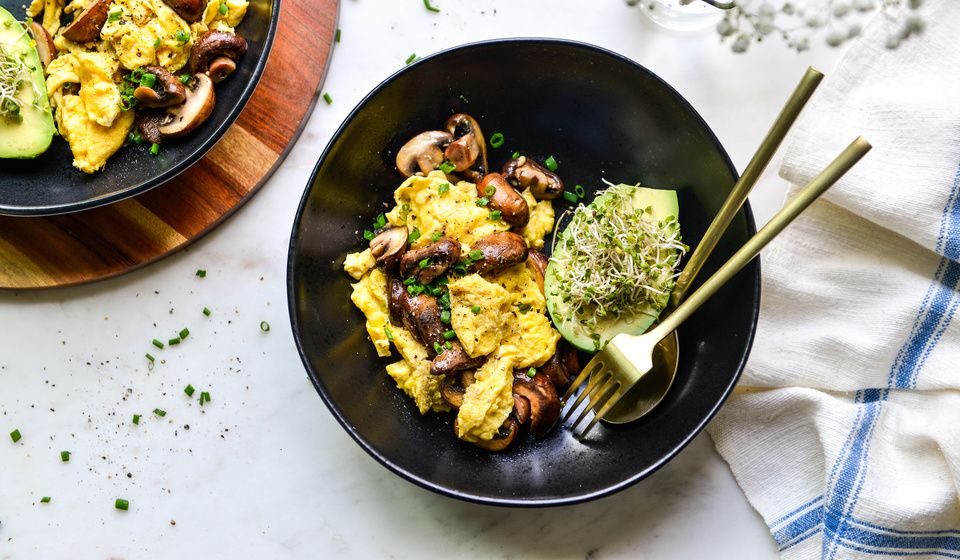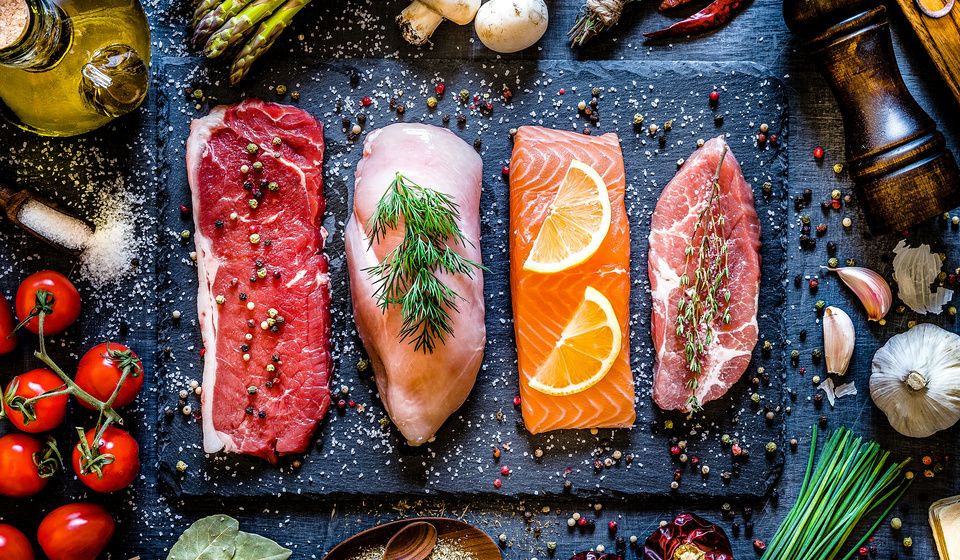Remove What Dulls Your Light: A Detox of Toxins, Alcohol, and Plastics
Ali Segersten May 15, 2025
What if the exhaustion isn’t you, but what you’re carrying? You’re eating better. Drinking more water. Trying your best to care for your body. And still…your energy is low. The inflammation lingers. The spark feels just out of reach.
Sometimes, what drains us isn’t a lack of effort—but an unseen burden.
Alcohol. Pesticides. Plastics.
Some of these are hard to let go of. Others are hard to even see.
Alcohol often holds deep emotional ties—used to soothe, numb, and belong. Letting go can feel like tearing away a lifeline. But the truth is, alcohol slowly erodes the very systems it pretends to soothe, damaging your gut, depleting your brain of calming neurotransmitters, and weakening your body's ability to detox and restore.
Other toxins are quieter.
You might not realize that pesticides block mineral absorption, inflame the gut, and disrupt your mitochondria. Or that plastics—especially BPA and microplastics—interfere with hormones, blood sugar, and even fertility.
They’re not just in water bottles. They’re in food packaging, storage bags, and even in the plastic spoon you’re using to eat your hot soup on the go.
This is about awareness.
Once you can see the source of your symptoms, you can begin to reclaim your energy.
Letting go often requires more courage than holding on. But it's in the release of hidden stressors that the body begins to heal.
In this space, your mind clears. Your life force returns.
The Silent Load You Carry
Many of us are unknowingly burdened by an invisible toxic load, built from years of exposure to alcohol, pesticides, plastics, and other everyday compounds that dulls our energy, disrupts our hormones, damages our guts, and inflames our nervous systems. These stressors may seem small in isolation, but over time, they erode vitality, cloud mental clarity, and block the body’s natural rhythm of renewal.
Alcohol: The Gut-Damaging, Brain-Depleting Toxin
For many, alcohol is simply normalized—woven into social settings, relaxation rituals, or even perceived as harmless in small amounts. And depending on your genetics, health status, and ability to detoxify, occasional low-alcohol consumption may not pose significant harm.
But the truth is, alcohol is often overused, and for many, it becomes a coping mechanism—or even an addiction. In these cases, its impact is far from benign. Alcohol damages the gut lining, disrupts the microbiome, depletes calming neurotransmitters like GABA, and hinders mitochondrial function. It robs the body of nutrients and the brain of restorative sleep, making true healing harder to access without addressing its role.
For those navigating addiction, this step requires deep support—emotionally, physically, and spiritually. Tools like NAD⁺ infusions, targeted nutrition, and nervous system healing can be powerful allies in the process of letting go.
Here’s what the science tells us:
Gut barrier damage: Alcohol increases intestinal permeability ("leaky gut") by disrupting tight junction proteins and fueling inflammation.
Histamine overload: It blocks the enzyme diamine oxidase (DAO), impairing your ability to break down histamine and worsening symptoms like headaches, rashes, anxiety, and bloating.
Neurotransmitter disruption: Alcohol initially increases GABA activity—the brain’s primary calming neurotransmitter—creating a temporary sense of relaxation and reduced anxiety. But with repeated use, this overstimulation leads to a downregulation of GABA receptors, making them less responsive over time. The result? Chronic alcohol use dysregulates the GABA system, which can lead to heightened anxiety, poor sleep, and increased stress—especially when alcohol is withdrawn. It also depletes key nutrients—such as B vitamins, magnesium, and zinc—that are required for the synthesis and regulation of GABA.
Nutrient depletion:
- Magnesium
- B vitamins (especially B1, B6, folate, and B12)
- Zinc
- Glutathione—your master antioxidant
Sleep disruption: Even small amounts impair deep, REM-rich sleep, which is critical for detoxification and brain repair.
Supportive Tools:
For those struggling with alcohol dependence, NAD⁺ IV infusions and oral supplementation can help reset the brain’s reward pathways, while GABA or GABA-promoting nutrients (like L-theanine, magnesium glycinate, and vitamin B6) can restore calm.
Pesticides: Silent Saboteurs of Energy and Gut Health
Pesticides and herbicides—especially glyphosate—are now woven into the fabric of our modern food system, from conventional produce to grains and even animal products. But their impact is anything but benign. These chemicals may be invisible on your plate, but they can leave a profound imprint on your gut, your energy, and your long-term health. Over time, they chip away at the body's ability to absorb nutrients, regulate inflammation, and generate the energy needed to function and heal.
Here’s what the science tells us:
Disrupt gut microbiota: Glyphosate alters microbial diversity, reducing beneficial species like Lactobacillus and Bifidobacterium while allowing overgrowth of opportunistic pathogens.
Increase gut permeability: Pesticides damage the gut lining and tight junctions, contributing to food sensitivities and systemic inflammation.
Impair mitochondria: Organochlorine and organophosphate pesticides interfere with mitochondrial enzyme complexes, reducing ATP (energy) production.
Chelate minerals and impair absorption: Glyphosate binds to minerals like magnesium and zinc, impairing their absorption and function in the body.
May disrupt detoxification and nutrient absorption: Some researchers suggest that glyphosate interferes with the body’s detox pathways by blocking cytochrome P450 enzymes and harming the gut microbiome’s ability to produce essential amino acids—both critical for nutrient absorption and metabolic balance.
Disrupts soil biology and reduces nutrient density of food: Glyphosate chelates essential minerals in the soil and harms root-associated microbes. This results in nutrient-depleted crops, which can contribute to nutrient deficiencies in the humans and animals that consume them.
Reducing pesticide exposure is about creating the internal conditions in which your body can thrive. Choose organic whenever possible. Prioritize the Dirty Dozen list. Wash produce thoroughly with a vinegar rinse. Small choices make a profound difference.
Plastics, BPA, and Microplastics: Hidden Hormone Disruptors
Plastic containers, water bottles, storage bags, and canned goods often contain bisphenol A (BPA) or related compounds like BPS—known endocrine disruptors that interfere with your body's natural signaling systems. But it doesn’t stop there.
The truth about plastics:
Mimic estrogen: BPA binds to estrogen receptors, disrupting hormonal balance and increasing the risk of hormone-driven conditions.
Interfere with insulin signaling: BPA and phthalates contribute to insulin resistance and weight gain by altering glucose metabolism.
Generate oxidative stress: Plastics increase reactive oxygen species (ROS), damaging mitochondria and accelerating cellular aging.
Disrupt detox pathways: The body stores many of these compounds in fat tissue, complicating detoxification and weight loss efforts.
What about microplastics?
Where they come from: Microplastics are tiny plastic fragments that break off from food packaging, storage bags, water bottles, and even plastic cutting boards. They can enter food during storage or heating, especially with oily or acidic foods.
How they harm us: These particles can accumulate in tissues, triggering inflammation, oxidative stress, and immune system dysregulation. Research also suggests microplastics may disrupt the gut microbiome and interfere with endocrine function.
Simple swaps to reduce plastic exposure:
- Store food in glass containers instead of plastic.
- Use beeswax wraps instead of cling wrap.
- Switch to paper sandwich bags or stainless steel bento boxes for packed lunches.
- Avoid microwaving food in plastic or using plastic utensils with hot meals.
- Choose filtered water in glass or stainless bottles when possible.
Each of these small shifts—swapping plastic containers for glass, choosing beeswax wraps over cling wrap, avoiding plastic utensils with hot foods—reduces your body’s toxic burden.
It’s not about being perfect. It’s about creating a safer, more supportive environment for your hormones, your detox pathways, and your long-term vitality.
Every time you choose to reduce your exposure, you’re choosing to protect your future self. And that is a powerful act of nourishment.

The Deeper Why: Clearing the Way Back to Wholeness
Underneath all of this—the research, the toxins, the food swaps—is something deeper:
Your body is always trying to heal.
It knows the way back to balance. To clarity. To wholeness.
But it cannot fully repair while constantly bombarded by substances that deplete its defenses and confuse its signals.
Removing these stressors isn’t about restriction—it’s about returning.
A quiet, steady homecoming to the self you may have forgotten beneath the inflammation, fatigue, and disconnection.
And yes, change takes effort. But the return on that effort is profound.
More energy. More ease. A deeper connection to your body’s intuitive wisdom. A clearer path forward.
Every nourishing choice you make isn’t just about food—it’s a step on your path to wholeness.
Want guidance for each step of this journey? ✨
Removing dietary stressors is only the beginning. Explore more ways to reduce your toxic load and support whole-body healing:
Explore The 12 Gifts of Health →
Discover a month-by-month transformational journey to reclaim your health, energy, clarity, and inner resilience.
Gift #5: Remove Dietary Stressors and Toxins →
Explore this powerful phase in the 12 Gifts of Health series—how to eliminate hidden stressors in food, home, and habit to support healing at the root.
Clear the Clutter Within: Detoxing Your Home, Body, and Daily Rituals →
Learn how everyday products—from cookware to cosmetics—may be interfering with your body’s natural rhythms, and discover simple swaps to reduce your toxic load at home.
Blood Sugar, Cortisol, and the Brain: Healing the Sugar Addiction Cycle →
Understand the physiological hooks behind sugar cravings—and how to break free with balanced meals and nervous system support.
How to Do a Detoxification Diet and Why →
Learn the science behind detoxification and why a whole-foods approach is more effective than extreme cleanses or restrictive plans.
Essential Cooking Equipment For Your Kitchen →
Set yourself up for success with simple tools that make daily nourishing meals easy and sustainable.
References:
Alonso-Magdalena, P., Quesada, I., & Nadal, A. (2011). Endocrine disruptors in the etiology of type 2 diabetes mellitus. Nature Reviews Endocrinology, 7(6), 346–353. https://doi.org/10.1038/nrendo.2011.56
Bishehsari, F., Magno, E., Swanson, G., Desai, V., Voigt, R. M., Forsyth, C. B., & Keshavarzian, A. (2017). Alcohol and gut-derived inflammation. Alcohol Research: Current Reviews, 38(2), 163–171. https://www.ncbi.nlm.nih.gov/pmc/articles/PMC5513683/
Braidy, N., Villalva, M. D., & van Eeden, S. (2020). Sobriety and satiety: Is NAD⁺ the answer? Antioxidants (Basel, Switzerland), 9(5), 425. https://doi.org/10.3390/antiox9050425
Dharavath, R. N., Pina-Leblanc, C., Tang, V. M., Sloan, M. E., Nikolova, Y. S., Pangarov, P., Ruocco, A. C., Shield, K., Voineskos, D., Blumberger, D. M., Boileau, I., Bozinoff, N., Gerretsen, P., Vieira, E., Melamed, O. C., Sibille, E., Quilty, L. C., & Prevot, T. D. (2023). GABAergic signaling in alcohol use disorder and withdrawal: Pathological involvement and therapeutic potential. Frontiers in Neural Circuits, 17, 1218737. https://doi.org/10.3389/fncir.2023.1218737
Farkhondeh, T., Mehrpour, O., Forouzanfar, F., Roshanravan, B., & Samarghandian, S. (2020). Oxidative stress and mitochondrial dysfunction in organophosphate pesticide-induced neurotoxicity and its amelioration: a review. Environmental Science and Pollution Research, 27(20), 24799–24814. https://doi.org/10.1007/s11356-020-09045-z
Kumar, S., Porcu, P., Werner, D. F., Matthews, D. B., Diaz-Granados, J. L., Helfand, R. S., & Morrow, A. L. (2009). The role of GABA(A) receptors in the acute and chronic effects of ethanol: A decade of progress. Psychopharmacology, 205(4), 529–564. https://doi.org/10.1007/s00213-009-1562-z
Mesnage, R., Renney, G., Séralini, G. E., Ward, M., & Antoniou, M. N. (2017). Multiomics reveal non-alcoholic fatty liver disease in rats following chronic exposure to an ultra-low dose of Roundup herbicide. Scientific Reports, 7, 39328. https://doi.org/10.1038/srep39328
Rochester, J. R. (2013). Bisphenol A and human health: A review of the literature. Reproductive Toxicology, 42, 132–155. https://doi.org/10.1016/j.reprotox.2013.08.008
Samsel, A., & Seneff, S. (2013). Glyphosate’s suppression of cytochrome P450 enzymes and amino acid biosynthesis by the gut microbiome: Pathways to modern diseases. Interdisciplinary Toxicology, 6(4), 159–184. https://doi.org/10.2478/intox-2013-0026
Wright, S. L., & Kelly, F. J. (2017). Plastic and human health: A micro issue? Environmental Science & Technology, 51(12), 6634–6647. https://doi.org/10.1021/acs.est.7b00423
Wu, D., & Cederbaum, A. I. (2003). Alcohol, oxidative stress, and free radical damage. Alcohol Research & Health, 27(4), 277–284. https://pubmed.ncbi.nlm.nih.gov/15540798/
Zobiole, L. H. S., Kremer, R. J., Oliveira, R. S., & Constantin, J. (2010). Glyphosate affects micro-organisms in rhizospheres of glyphosate-resistant soybeans. Journal of Applied Microbiology, 110(1), 118–127. https://doi.org/10.1111/j.1365-2672.2010.04864.x

About the Author
Alissa Segersten, MS, CN
Alissa Segersten, MS, CN, is the founder of Nourishing Meals®, an online meal-planning membership with over 1,800 nourishing recipes and tools to support dietary change and better health. As a functional nutritionist, professional recipe developer, and author of The Whole Life Nutrition Cookbook, Nourishing Meals, and co-author of The Elimination Diet, she helps people overcome health challenges through food. A mother of five, Alissa understands the importance of creating nutrient-dense meals for the whole family. Rooted in science and deep nourishment, her work makes healthy eating accessible, empowering thousands to transform their well-being through food.Nourishing Meals Newsletter
Email updates.






Add Comment